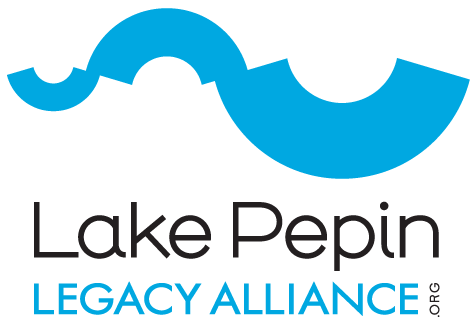The “Friendship Tour,” conducted in August and September, was an effort to promote shared vision and understanding about water quality issues affecting the Minnesota River and Lake Pepin. The tour was a joint effort between Clean up the River Environment (CURE), the Minnesota Ag Water Resources Coalition (MAWRC), the Minnesota River Board (MRB), the Minnesota River Watershed Alliance (MinnRivWa), the Cannon River Watershed Partnership (CRWP), and the Lake Pepin Legacy Alliance (LPLA). Red Wing was the gathering place on August 23 & 24th for the first exchange of upstreamers from the western part of Minnesota and the downstreamers of the Lake Pepin region. The second half of the Tour was held on September 29 & 30th.
Harvesting the Sun: Elemental Connections between Land and Water
“Really, what we do as farmers is harvest the sun,” said Bruce Tiffany, who raises corn and soybeans near Redwood Falls in southwestern Minnesota.The statement struck me as genuine and deeply felt, and possibly universal, as he was the first of two farmers that Thursday morning to introduce his farm to us Lake Pepin residents with very similar words. Brian Hicks, who expressed these sentiments later, raises corn, soybeans and forage crops in Lyon County. It was an “aha” moment on the second leg of the Lake Pepin-Minnesota River Basin Friendship Tour on Wednesday and Thursday, Sept. 29-30. On the first leg, a group of Minnesota River Basin farmers had paid us a visit on August 23-24.
It got me thinking – the Mississippi River also “harvests the sun.” Unfortunately, excessive suspended sediment, mostly from the Minnesota River, keeps the river so cloudy that little sunlight reaches the river bed to stimulate growth of wild celery, sago pondweed, star grass and other desirable species of “submerged aquatic vegetation.”
So, at a vital, fundamental level, we residents of the Lake Pepin area share a common interest with Minnesota River basin farmers in optimizing the harvesting of the sun. Conventional, commercial farmers harvest the sun through a biological chain linking grass, corn or soybeans with livestock or ethanol production. Water is, of course, essential to raising crops and livestock: too little, or too much, interferes with optimal growth. Too much pounding rain on the fields produces soil erosion, while ponded water starves plants for oxygen. Too little water at the wrong time wilts plants, interferes with pollination, and leads to a poor harvest.
As we learned visiting three farms, each farmer optimizes sunlight, water, soil and nutrients differently. Each farm is unique. It got me thinking, that perhaps farmers prize their independence out of necessity, because they need flexibility to deal with the unique needs and potential of the land they farm. They dread the heavy hand of government, especially “one size fits all” recommendations or regulations.
It got me thinking – the Mississippi River also “harvests the sun.” Unfortunately, excessive suspended sediment, mostly from the Minnesota River, keeps the river so cloudy that little sunlight reaches the river bed to stimulate growth of wild celery, sago pondweed, star grass and other desirable species of “submerged aquatic vegetation.”
So, at a vital, fundamental level, we residents of the Lake Pepin area share a common interest with Minnesota River basin farmers in optimizing the harvesting of the sun. Conventional, commercial farmers harvest the sun through a biological chain linking grass, corn or soybeans with livestock or ethanol production. Water is, of course, essential to raising crops and livestock: too little, or too much, interferes with optimal growth. Too much pounding rain on the fields produces soil erosion, while ponded water starves plants for oxygen. Too little water at the wrong time wilts plants, interferes with pollination, and leads to a poor harvest.
As we learned visiting three farms, each farmer optimizes sunlight, water, soil and nutrients differently. Each farm is unique. It got me thinking, that perhaps farmers prize their independence out of necessity, because they need flexibility to deal with the unique needs and potential of the land they farm. They dread the heavy hand of government, especially “one size fits all” recommendations or regulations.
That puts us in a good position, I believe, for discussing the soon-to-arrive Total Maximum Daily Load Report for the South Metro Mississippi River. It provides a scientific basis for a water quality goal (32 parts per million season average total suspended solids), and in very gross terms specifies suspended sediment targets for the main tributaries: the Minnesota, Cannon and Upper Mississippi River, plus urban areas. It leaves plenty of room for discussion and innovation for reaching those goals, which, incidentally, would reduce sediment loads to Lake Pepin by half, and double its expected life, while restoring the river’s ecology for the benefit of swans, ducks, fish – and people.
Best regards,
Michael McKay, Lake Pepin Legacy Alliance


